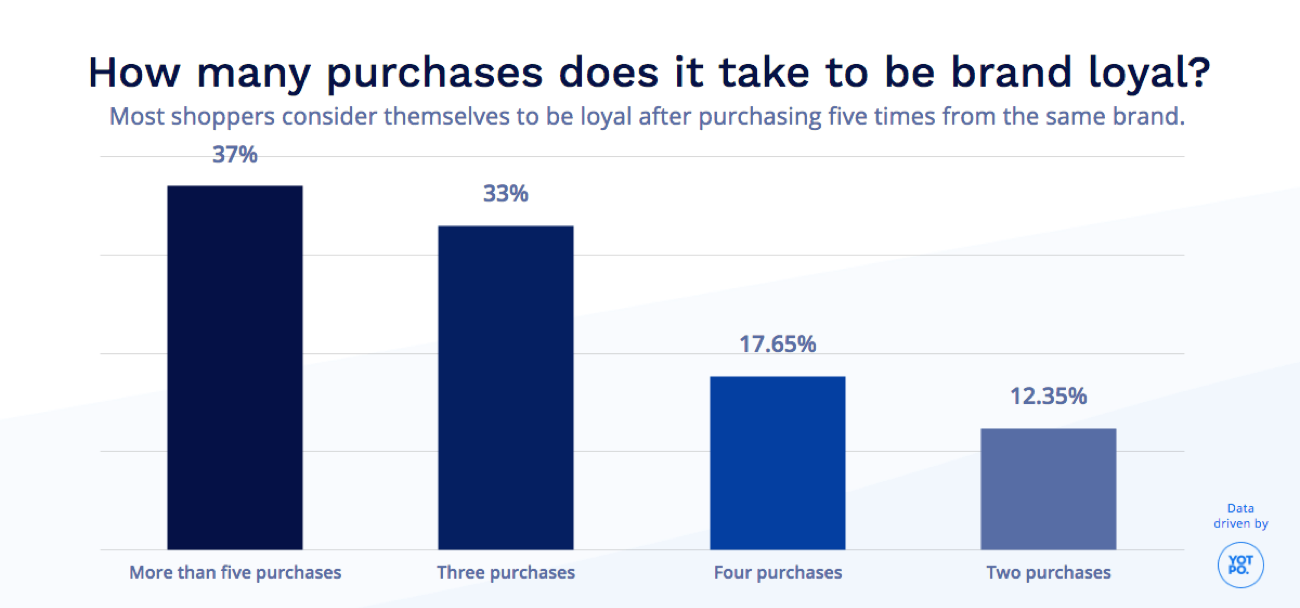There is a natural, inherent connection in what loyalty and search bring to a brand’s table – think of these two disciplines as the salt and pepper in the ultimate marketing mix.
All brands are aware of the need for a variety of online marketing channels to drive consumer discovery and regular sales activity.
But too many brands mistakenly treat two of the most essential channels in their arsenal – loyalty and SEO – as far apart disciplines.
The fact is, loyalty and search should be considered in tandem when mapping out and fundamentally understanding the total customer journey.
Loyalty & SEO Mutual Reinforcement for a Lifetime
When it comes to customer acquisition strategies, the resulting sale is not the end of the program. It’s the beginning of a shopping cycle and the potential start of a long-lasting relationship between brand and customer.
It’s a simple proposition. And yet, despite spending perhaps $2,500 to $5,000 a month on SEO services, brands may actually be wasting their money by not following through on getting those searchers to come back more regularly.
By linking loyalty and SEO, marketers and their agencies can draw a clear line between discovery and customer retention and driving higher lifetime value.
Meeting New Expectations
To better understand the connection between loyalty and SEO, consider the way Amazon attracts and retains shoppers.
People search for a particular kind of item. Amazon then serves up an array of choices based on that customer’s past behavior and what similar shoppers have rated highly.
Most importantly, once the sale is completed and the product has been delivered, Amazon quickly follows up by asking about the experience in the form of a review. The e-tail giant also shows recommendations for what other people who made the same purchase are buying.
It’s all based on the patterns of connections that consumers are indirectly demonstrating to Amazon. Understanding the customer lays the foundation for loyalty and it’s something that all brands must commit to.
At a time when personalization, which includes remembering what the most accurate shopping attributes about a customer are, brands must find a way to connect the dots among their loyalty and search marketing touchpoints.
Reviews: From Intent to Incent
At their core, loyalty marketing is all about incentivizing consumer behavior that drives engagement and moves the business. Here, too, the sale is a key goal, but it’s not the total endgame.
Some of the actions a business will want a loyal customer to take could include brand-building activities like sharing a photo on social media and tagging a specific item, service, or promotion. Many loyalty programs also encourage users to leave a positive review through a variety of incentives.
With the proliferation of online guides, the role of the reviews has become a crucial part of a brand’s content strategy.
In fact, review content supports SEO. As such, reviews draw a direct line between loyalty and SEO and highlight why the two disciplines need to be conducted seamlessly.
Reviews support a local brand’s “prominence” in Google search results. It’s important for marketers to note that online mentions factor into how a business is ranked against competitors as Google’s algorithm regards it as public reputation.
Given this, loyalty boosts the success of search by creating an engine for generating review content; in the second place, loyalty can potentially help brands and agencies determine if that SEO lift can generate a continued relationship between the marketer and consumer.
To quantify the value of connecting SEO to loyalty and the ability to generate lifetime customer value, consider that referred consumers are 18 percent more likely to be long-term spenders with your brand. Referrals attract more educated and trusting customers – the kind of people who help spread the word online.
The best way to truly consider whether an SEO strategy was effective is not just to concentrate on discovery alone and in isolation; it’s whether the SEO program turned acquired customers into lasting, high-value ones.
Discovery Doesn’t Happen in Isolation
It’s true that the goals and KPIs associated with an SEO effort and loyalty marketing program are divergent. But ensuring the ROI of both kinds of programs intersect with each other is clear and natural.
Think of loyalty marketing and SEO as the “salt and pepper of the marketing mix.” As ingredients among several others in a dish, salt and pepper may not go into the pot at the same time.
But when it comes to testing for flavor, most cooks will focus on whether there is too much (or too little) salt or pepper before the plating happens. (No one ever says “too much cumin” in a dish. It’s all about the most pronounced flavors that matter. The same is true with loyalty and SEO.)
To keep the culinary analogy going just a bit more, the salt and pepper should blend with the other ingredients, balance each other out, and enhance all the other parts of the meal.
The point is, salt and pepper don’t do the job by themselves. They deepen the experience of the entire dish. That’s what loyalty marketing and SEO do.
But unlike cooking, there’s a lot of loyalty and SEO that can easily be automated.
For example, a brand or agency can reward referrals that produced the most frequent shoppers the platform helped discover in the first place.

As brands and agencies implement their future marketing plans, it pays to think of the way discovery and customer relationships develop.
About 70 percent of consumers say it takes at least three purchases for them to regard themselves as maintaining a certain “brand loyalty.”
By encouraging and leading customers to return over and over (as Amazon surely does), measuring the level of loyalty from SEO targets can create the right behaviors to enable loyalty to form.
In the end, no one needs to search for what they’ve already found. But brands and agencies can make it easy for consumers to keep finding what they want over and over by looking at the areas where search and loyalty overlap.
More Resources:
- How Negative Reviews Impact SEO
- Where & How to Get the Right Reviews for Your Business
- A Complete Guide to SEO: What You Need to Know in 2019
Image Credits
Screenshot taken by author, January 2019





